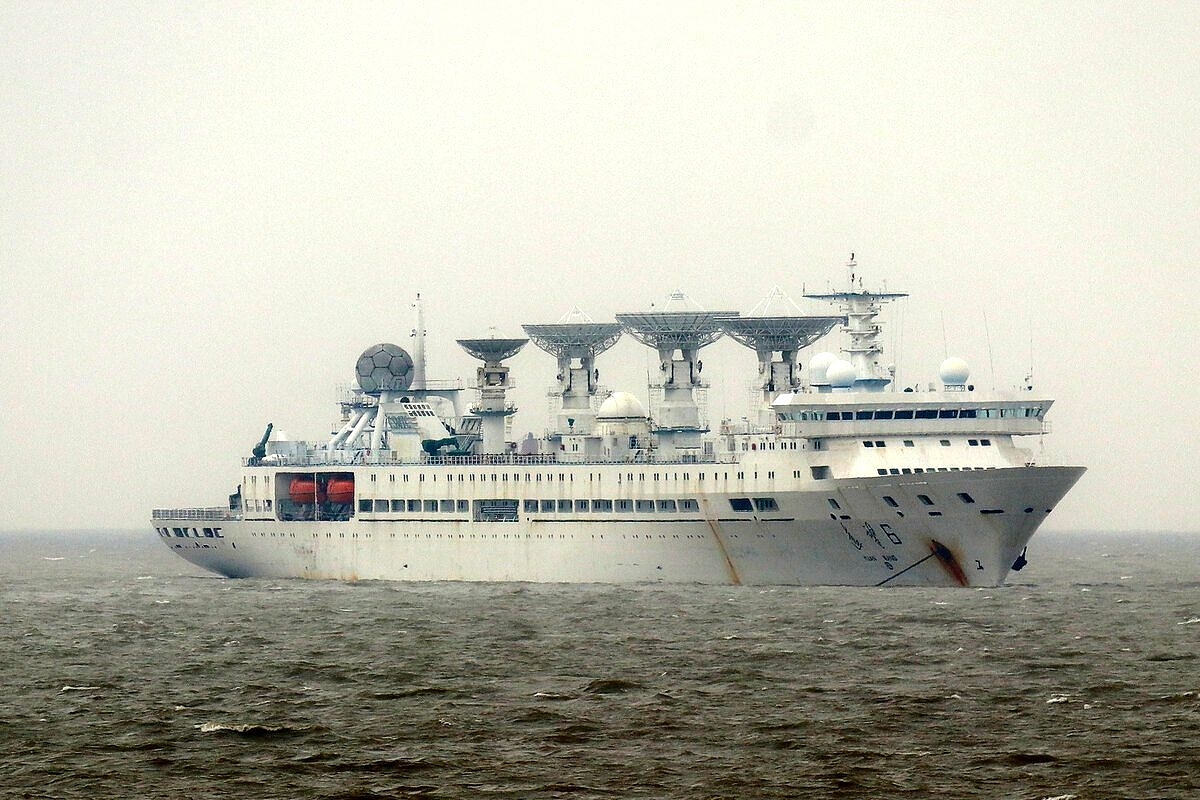News Brief
India To Stop Chinese Spy Ship From Entering Exclusive Economic Zone; It Had Expelled Survey Vessel Near Andaman In 2019
- With the Chinese Navy’s expanding footprint in the Indian Ocean, Chinese research vessels are making regular forays into the region.

Chinese spy ship Yuan Wang VI
India is closely monitoring the movement of the Chinese intelligence-gathering vessel named Yuan Wang VI in the Indian Ocean. The country will not allow the ship to enter its exclusive economic zone (EEZ).
The Chinese ship entered the Indian Ocean earlier this month through the Lombok Strait, which lies between the Indonesian islands of Java and Sumatra.
The Lombok Strait is one of three major chokepoints linking the Indian Ocean to the Pacific Ocean; the Malacca and Sunda Straits are the other two.
The vessel entered the Indian Ocean just days ahead of a planned missile test by India. It is equipped with advanced surveillance equipment and sensors. It is also capable of tracking ballistic missiles and satellites, and gathering signal intelligence.
India's test will likely occur sometime between 10 and 11 November, as a "NOTAM" or Notice to Airmen, issued last month, suggests.
The notice also indicates that the missile may fly for a range of 2,200 kilometres (km).
While some reports say India might test its K-4 submarine-launched ballistic missile, others suggest that the missile to be test-fired belongs to the Agni series of ballistic missiles.
No Access To EEZ
According to reports, India will not allow the Chinese spy ship to enter its EEZ.
A country's EEZ is an area extending 200 nautical miles or 370 km outwards from the shore. In this zone, the country has exclusive rights over the exploration and exploitation of resources and other activities.
In September 2019, India had spotted a Chinese research vessel in its EEZ around the Andaman and Nicobar Islands and expelled it.
The Chinese survey ship Shi Yan 1 was operating without permission in Indian waters just west of Port Blair.
There are no restrictions on carrying out marine scientific research in international waters under the United Nations Convention on the Law of the Seas. However, states are required to seek permission at least six months prior to pursue such research in another country’s EEZ or the continental shelf.
A senior official said, as per an IANS report:
"We are constantly monitoring her every movement. Our surface and sub-surface assets are tracking the Yuan Wang-6. So are our unmanned aerial vehicles (UAVs) and long-range maritime surveillance aircraft.
"In fact, we are also in a position to find out what this ship is tracking. Though we can't do anything till she is in the open seas, action can be taken once she attempts to enter our EEZ.
"However, a foreign survey and research vessel can't be allowed to operate in our EEZ. She won't be able to get close to our coastline. We know that Yuan Wang-6 has powerful equipment on board that can track from hundreds of nautical miles away, but there is nothing anybody can do so long as she is in international waters."
Chinese Research Vessels In The Indian Ocean
With the People’s Liberation Army Navy’s expanding footprint in the Indian Ocean, Chinese research vessels are making regular forays into the region. They make multiple trips every year to survey vast swathes of the ocean.
For instance: Xiang Yang Hong 03, a survey vessel which joined the Chinese State Oceanic Administration’s fleet in March 2016.
A frequent visitor over the last few years, the vessel entered the Indian Ocean through the Sunda Strait in November 2019.
Over the next few months, it surveyed waters west of Indonesia and in the Bay of Bengal, close to the Andaman and Nicobar Islands.
In November, the ship was spotted in the western Indian Ocean, surveying a large area east of the African coast.
In the most recent case, two Chinese survey vessels were spotted in the Indian Ocean, south of the Andaman and Nicobar Islands, in January 2021.
They were surveying large swathes of the ocean around the Ninety East Ridge in a lawnmower pattern.
This uninterrupted stretch of relatively shallow water, where submarines are prone to detection, is close to the Indian Ocean chokepoints like the Sunda and Lombok Straits. Chinese warships and submarines use these straits to enter the Indian Ocean.
The research vessels are capable of bathymetric studies — mapping the depth of ocean floors, studying the ocean environment, and collecting hydrological data.
The data collected by such vessels can be used for both operating submarines in the region and detecting enemy undersea platforms deployed in these waters.
Also Read:
Introducing ElectionsHQ + 50 Ground Reports Project
The 2024 elections might seem easy to guess, but there are some important questions that shouldn't be missed.
Do freebies still sway voters? Do people prioritise infrastructure when voting? How will Punjab vote?
The answers to these questions provide great insights into where we, as a country, are headed in the years to come.
Swarajya is starting a project with an aim to do 50 solid ground stories and a smart commentary service on WhatsApp, a one-of-a-kind. We'd love your support during this election season.
Click below to contribute.
Latest